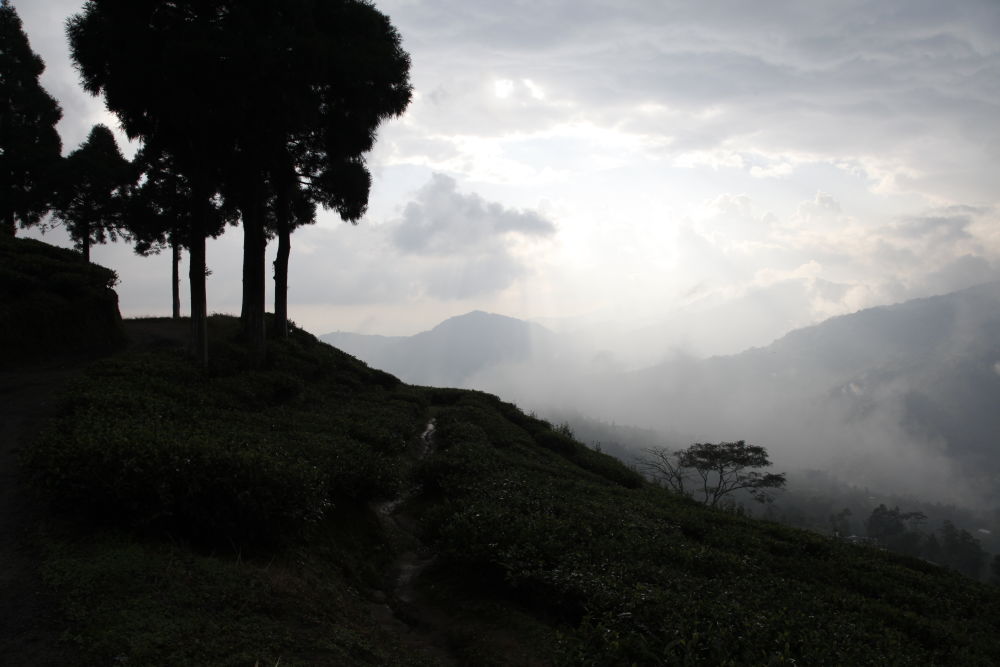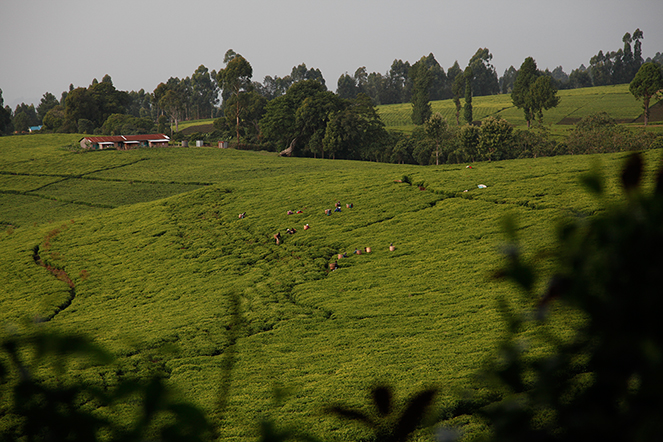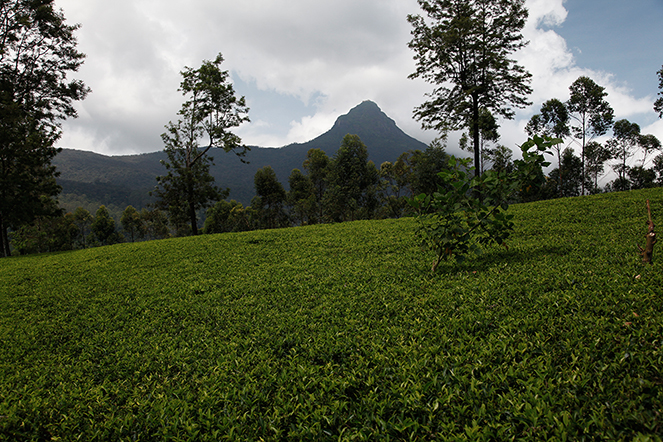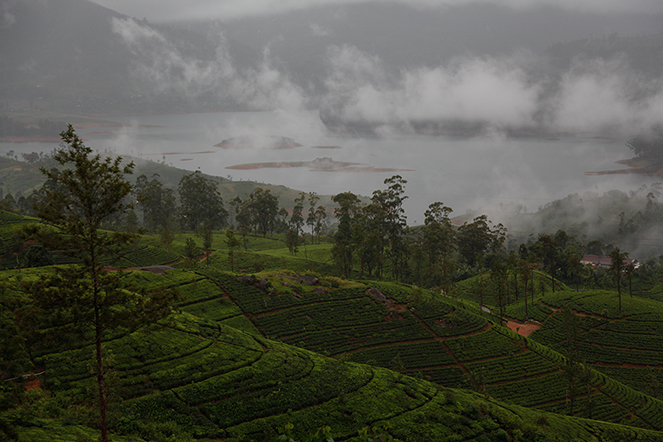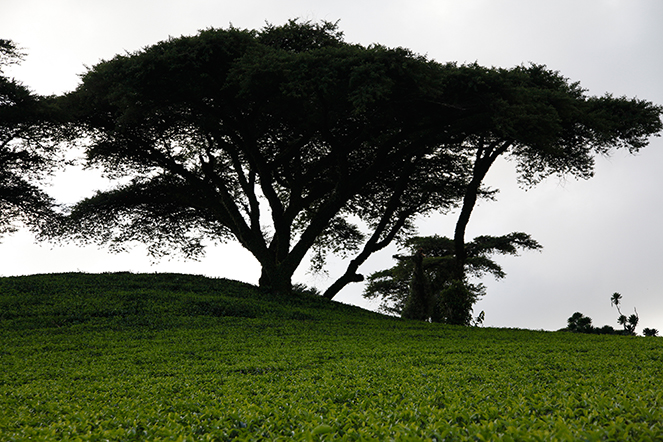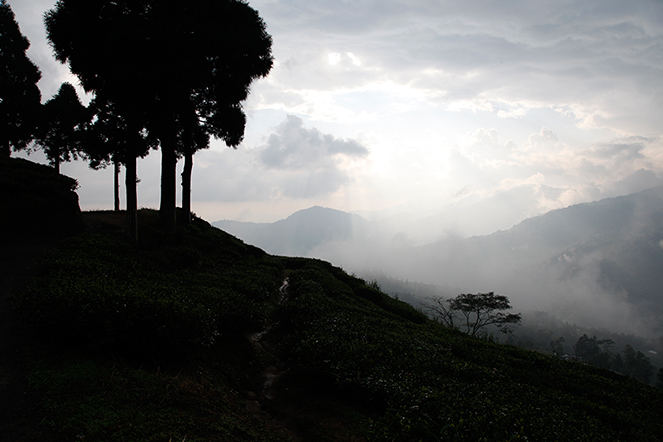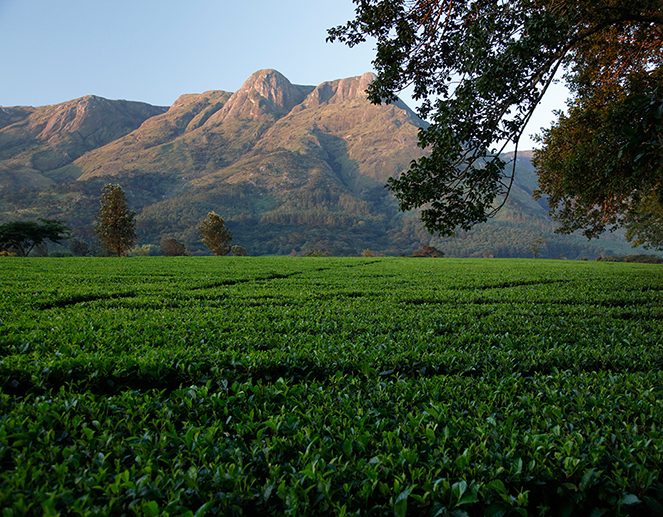In Darjeeling, where I am at the moment, there wasn’t a drop of rain in January or February. This means most plantations haven’t started to harvest yet. Only the ones with plots at low altitudes, who irrigate their plants, have been able to produce a few batches. But here, the first teas are never the best. In Darjeeling, when you’re looking for quality, you can never be in a hurry.
Plantation
A tea plantation in Kenya
Kangaita in Kenya is one of the country’s few plantations that produce high-quality teas; in other words, whole-leaf. The national park of Mount Kenya borders the garden and many birds flit about the tea plants. On the other hand, elephants are not welcome, because of the damage they cause.
Here, you can see the peaks of Mount Kenya in the distance: the highest is 5,199 metres.
Tea from the slopes of Mount Kenya
Kenya is one of the biggest exporters of tea on the planet. Sadly, most of its tea is CTC (Cut, Tear, Curl) – the type used in tea bags. But that should not prevent us from seeking out, at higher altitudes, small producers aiming for quality. So here I am, on the slopes of Mount Kenya, tasting some magnificent black teas. It goes to show, one should not rush to judge: just as some great “appellations” occasionally throw up unpleasant surprises, I sometimes come across passionate people who have acquired serious expertise, in less well-known places.
Darjeeling: a tea that should not be bought blindly
Around the world, much more Darjeeling tea is sold than is actually produced in Darjeeling. There are also considerable differences between gardens in terms of quality, and considerable differences in quality within the same garden. These differences are due to major variations in weather (a garden might produce excellent teas in April, for example, which is impossible in July during the monsoon) and because the same plantation will have tea plants growing at widely varying altitudes. In Tukvar, for example, 1,000 metres in altitude separates the top of the highest plot and the lowest point on the plantation.
So we must be careful when we buy Darjeeling teas, and we should never rely on the name alone, however prestigious it may be. We should also bear in mind that plantations situated on the plains, of mediocre quality, sit alongside those within the appellation, and human nature being what it is, there is a great temptation to sell Terai teas under the Darjeeling name.
Connoisseurs of first-flush Darjeelings must wait a few more weeks to try the new spring harvest. In this region of the world, tea plants are dormant between November and February, as the soil is too cold for Camellia sinensis.
Adam’s Peak
Many Sri Lankans have climbed the slopes of Adam’s Peak at least once in their lifetime.
It is a place of pilgrimage for Buddhists, who worship Buddha’s footprint at the summit, but also for Hindus, Muslims and Christians. The ascent begins with a walk through a tea field, which you cross on your way to the top.
A magnificent bungalow
The British had an instinct for comfort. They built magnificent bungalows during the colonial era. These buildings still exist today, surrounded by tea fields, like here in Gorthie (Sri Lanka). I was lucky to stay there recently. It was all very refined: they serve delicious food, and with the first light of dawn you are seduced by the beauty of the garden.
A tea field in Sri Lanka
Tea plants shaded by trees
In some countries, tea plants require cover. It depends on the climate. Strong sunshine dries out the ground, whereas tea plants love humidity. In addition, tea plants don’t like wind. The trees used differ from country to country but they tend to belong to the Leguminosae family. Pictured here is a fine Acacia abyssinica specimen.
Under the Himalayan clouds
During a heatwave you must remember to stay hydrated. You need to drink frequently. You can also cool your face, with a wet cloth or a facial mist. As for me, I like the original version of mist – it’s called the Himalayas. It is cool there, especially at this time of year, when clouds full of monsoon rain gather above your head.
At the foot of Mount Mulanje
In Malawi, tea grows in the south. We are here at the southern end of the Great Rift Valley, at the foot of Mount Mulanje. They say the views are incredible from the top; I can well imagine it, and intend to make the journey one day. In the meantime, I think the view from the bottom isn’t bad either, both vegetal and mineral. This expanse of green relaxes the eyes. It’s quite an idyllic place to work.

